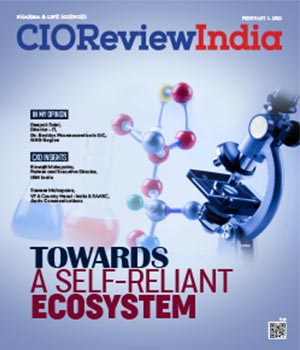
Recommended Dietary Allowance and Its Importance
Janifha Evangeline | Sunday, 08 August 2021, 23:54 IST

The nutraceutical and pharmaceutical sector in India has together sought the intervention of the Union Ministry of Chemicals and Fertilizers on the issue of implementation of the arbitrary pan-India ban on methylcobalamin. One of the industry delegations reached the Union Minister of Chemicals and Fertilizers. The delegations mainly wanted to notify about methylcobalamin for neurological disorders since no regulatory action can be taken against the ones producing methylcobalamin-based formulations, without any scientifically defined efficacious RDA value owing to notification delay.
As soon as it is notified, the approved value for Recommended Dietary Allowance (RDA) can be defined. This can be defined in a scientific method, based on evidence. The issue, however, the issue has been suppurating because of no exact/accurate information on TUL of vitamin B12/ methylcobalamin.
Recommended Dietary Allowance (RDA)
The Recommended Dietary Allowance in short known as RDA is the average of the daily dietary intake level. This intake level is sufficient to reach the nutrient requirement of nearly all (97-98%) healthy people. This is specific to gender & also life stage group (this considers age, when it is applicable, pregnancy or lactation).
Setting the RDA (Recommended Dietary Allowance)
The process for setting the RDA is mainly based on being capable to set an Estimated Average Requirement (EAR), which is from where the Recommended Dietary Allowance is being derived or originating from the nutrient requirement. Therefore, if an Estimated Average Requirement (EAR), cannot be set, the RDA (Recommended Dietary Allowance) will also not be set.
The Estimated Average Requirement is the everyday intake value of a nutrient which is predicted to reach the nutrient requirement of 50 percent of the healthy people in a life stage as well as gender group. Before setting the Estimated Average Requirement (EAR), a particular criterion of adequacy is chosen, depending on a meticulous review of the literature and while choosing the criterion, the decrease of disease risk is regarded with multiple and different health parameters.
The RDA (Recommended Dietary Allowance) is set at the Estimated Average Requirement (EAR) + two times the standard deviation if known (RDA=EAR+2).
If data regarding the variability in requirements are not sufficient in order to find out the standard deviation, a coefficient of variation for the Estimated Average Requirement of ten percent is ordinarily assumed ordinarily. And that is (RDA=1.2xEAR).
Tolerable Upper Limit
Like how quantitative guidelines are required to ensure the adequacy of nutrient intake, in the same way, guidelines are required in order to assure that usual intake levels are not so high. It should ensure that the intake levels are not very high and it could result in situations where they would pose a risk of adverse health effects to either an individual/group.
The Tolerable Upper Intake Level (TUL) is defined as “the highest level of daily nutrient intake that is likely to pose no risk of adverse health effects to almost all individuals in the general population.”
As intake goes above or starts to increase above the TUL, the risk of adverse effects also starts to increase. The main reason why the term tolerable intake was selected was to eliminate implying a possible beneficial effect. Rather, tolerable intake is considered to indicate a level of intake which can, with high probability, be tolerated biologically.
The Tolerable Upper Limits is not to be intended to a recommended level of intake and there are no established benefits for healthy individuals. And, if they consume nutrient intakes above the RDA or AI (Adequate Intake).
TULs are beneficial owing to the rising interest in and availability of fortified foods. Not just that, but also the surge in the use of dietary supplements. TULs are based on total consumption/intake of a nutrient from various sources such as food, water, & supplements when adverse effects have been associated with total intake/consumption. But whether the adverse effects are associated with intake/consumption from supplements, the TUL mainly depends on nutrient intake from those sources alone. And, really not on based on the total intake.
Determining TUL
The TUL is determined by implementing a risk assessment model. This model was particularly developed for nutrients viz. (IOM, 1998a). What the model comprises is a systematic series of scientific considerations and judgments. These scientific considerations and judgments were done by experts who have knowledge in both intake levels. Intake levels at which there are no expectations of risk of adverse health effects for all individuals in the general population. This also includes sensitive individuals.
The dose-response assessment, which ends/concludes with an estimate of the TUL, is built on 3 toxicological concepts. these concepts are most commonly implemented for assessing the risk of exposure to chemical substances. These include no-observed-adverse-effect level, lowest-observed-adverse-effect level & uncertainty factor (UF).
CDSCO asks FSSAI to take action on methylcobalamin manufacturers
Central Drugs Standard Control Organization has been following the Food Safety and Standards Authority of India in order to take action against manufacturers who produce methylcobalamin and sell methylcobalamin that is meant for therapeutic intervention.
According to Ahmedabad-based pharmaceutical consultant Dr. Sanjay Agrawal, “The clarity on pending notification on methylcobalamin which is being sought for is also based on former FSSAI CEO Pawan Agrawal’s official confirmation that methylcobalamin has been approved by its scientific committee during December 2019.”
FSSAI in an official statement has also clarified, “Currently, methylcobalamin is not listed under the Food Safety and Standards (Health Supplements, Nutraceuticals, Food for Special Dietary Use, Food for Special Medical Purpose, Functional Foods and Novel Foods) Regulations, 2016 and hence it can be used with prior approval by the FSSAI.”
This response from the Food Safety and Standards Authority of India arrives close on the heels of the nutraceutical and drug industry, which earlier had sought clarity from the Food Safety and Standards Authority of India about Recommended Dietary Allowance (RDA) values of vitamin C. Not just vitamin C but also other micronutrients such as methylcobalamin play a vital role in boosting immunity, mental health, etc.
CIO Viewpoint
Paving the Way for Digital Transformation of...
By Abhrasnata Das
Leveraging IT to ensure Data Integrity in...
By By Deepak Saini,Director – IT,Dr. Reddys Pharmaceuticals LLC, NAG Region
How Is Technology Disrupting The Pharma And...
By Onkar Kapoor, Group CIO & Head IT, Akums Drugs & Pharmaceuticals Ltd.
CXO Insights
The Growing Importance Of Supply Chain...
By Gustavo Salem, Group President, IDEX Health & Science LLC
A Symbiosis Of Technology And Nature
By Amanda L. Goltz, Vice President, Digital Innovation, BTG
Next-Generation Commercial Data Management...



.jpg)
.jpg)
.jpg)





